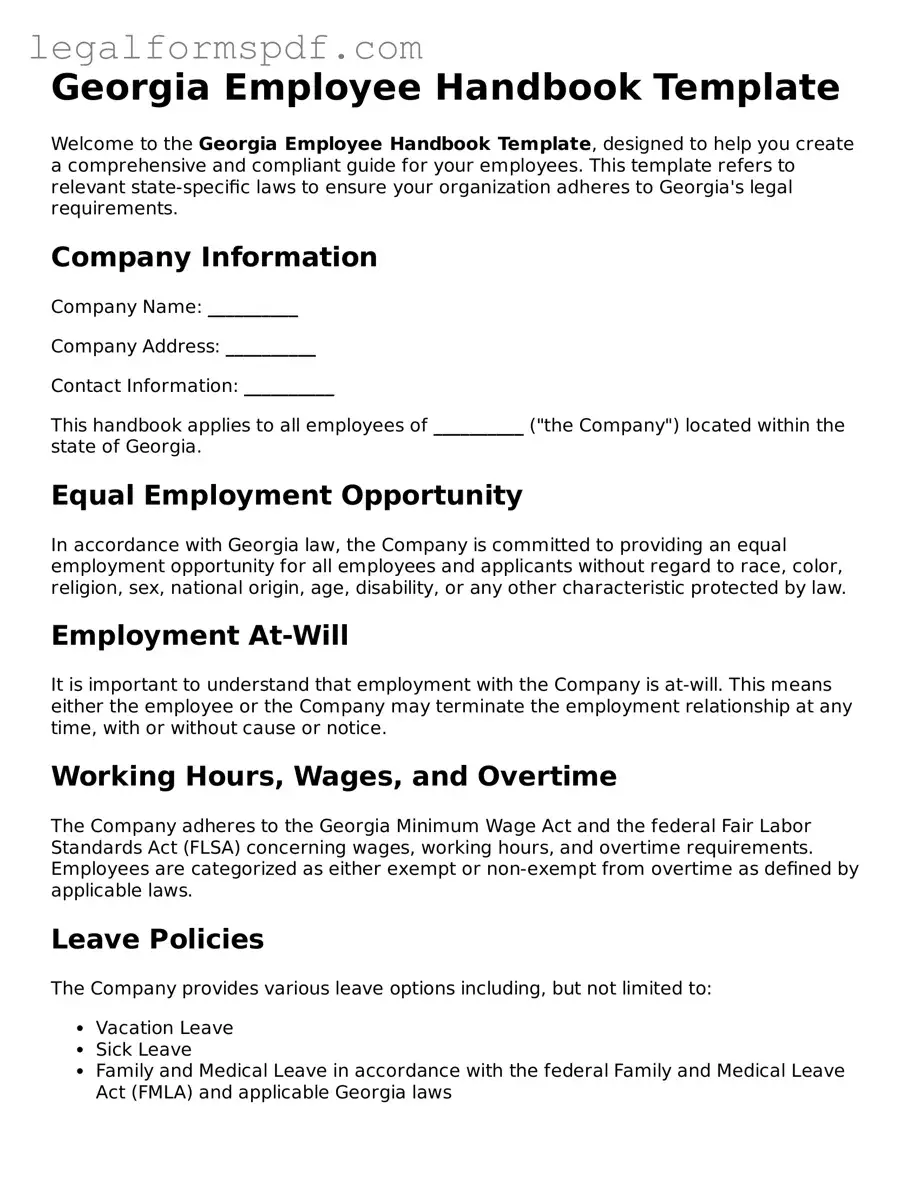Georgia Employee Handbook Template
Welcome to the Georgia Employee Handbook Template, designed to help you create a comprehensive and compliant guide for your employees. This template refers to relevant state-specific laws to ensure your organization adheres to Georgia's legal requirements.
Company Information
Company Name: __________
Company Address: __________
Contact Information: __________
This handbook applies to all employees of __________ ("the Company") located within the state of Georgia.
Equal Employment Opportunity
In accordance with Georgia law, the Company is committed to providing an equal employment opportunity for all employees and applicants without regard to race, color, religion, sex, national origin, age, disability, or any other characteristic protected by law.
Employment At-Will
It is important to understand that employment with the Company is at-will. This means either the employee or the Company may terminate the employment relationship at any time, with or without cause or notice.
Working Hours, Wages, and Overtime
The Company adheres to the Georgia Minimum Wage Act and the federal Fair Labor Standards Act (FLSA) concerning wages, working hours, and overtime requirements. Employees are categorized as either exempt or non-exempt from overtime as defined by applicable laws.
Leave Policies
The Company provides various leave options including, but not limited to:
- Vacation Leave
- Sick Leave
- Family and Medical Leave in accordance with the federal Family and Medical Leave Act (FMLA) and applicable Georgia laws
Workplace Safety and Health
The Company is committed to providing a safe and healthy work environment for all employees. This includes compliance with the Occupational Safety and Health Administration (OSHA) standards and any relevant state-specific regulations.
Employee Conduct and Disciplinary Action
Employees are expected to adhere to the Company’s codes of conduct. The Company reserves the right to take disciplinary action, up to and including termination, for violations of these codes.
Privacy and Confidentiality
Employees are required to maintain the confidentiality of proprietary information and adhere to the policies regarding privacy of data and information security.
Acknowledgement of Receipt and Understanding
Each employee is required to sign an acknowledgement form indicating that they have received, understand, and agree to comply with the policies outlined in this handbook.
Amendment Clause
The Company reserves the right to amend, modify, or rescind any policy or portion of this handbook at any time, with or without notice.
For further details or clarification on any policy outlined in this handbook, employees are encouraged to contact their immediate supervisor or the Human Resources Department.
